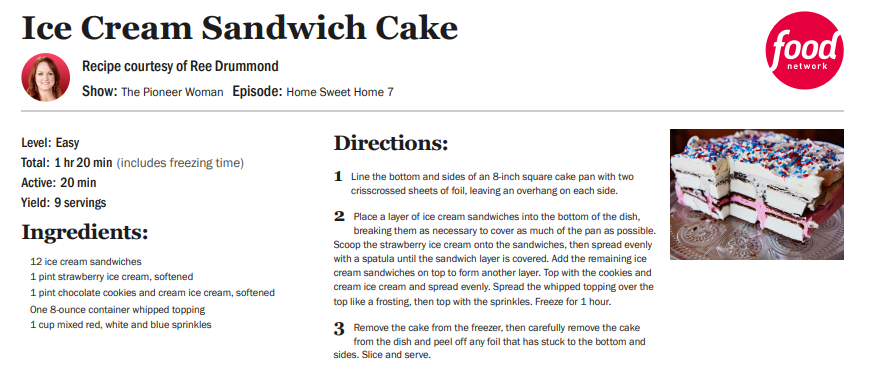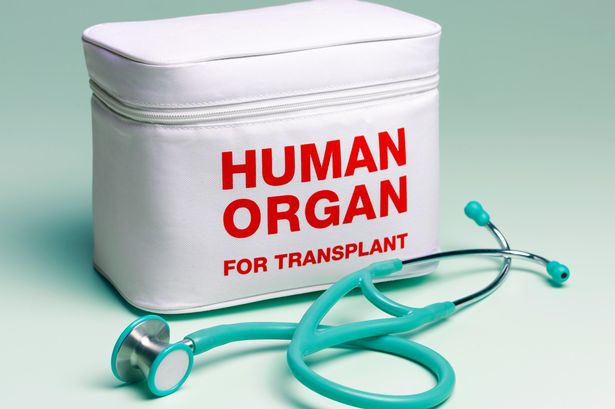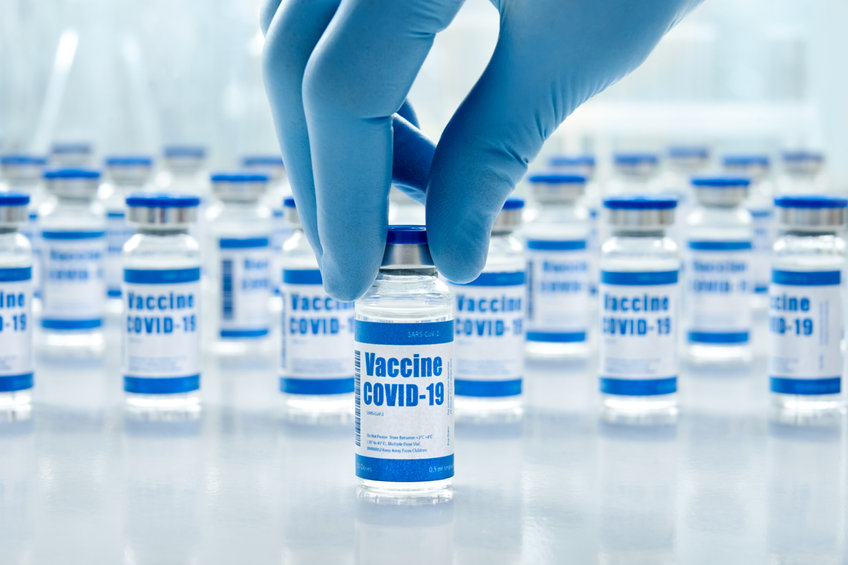This ESRD facility monthly newsletter highlights the latest ESRD insights and resources. Our goal is to provide you with a resource that makes it easy for you to stay on top of trends and support you in providing the best possible care for those you work with and serve.
In This Issue:
School is out and summer is here! Hopefully, each of you will get a bit of a breather now that schedules are somewhat more relaxed. As we slide into summertime (and before we talk about QI activities), here is an easy, fuss-free summer dessert you might want to try for Independence Day. Click HERE for the full recipe.

Depression
 Goal 1 of the ESRD Network contract is to improve behavioral health outcomes, as noted below. As we all work together to meet these goals and ultimately enhance the patient experience of care, we will encounter hurdles. We will also be challenged to mitigate these barriers.
Goal 1 of the ESRD Network contract is to improve behavioral health outcomes, as noted below. As we all work together to meet these goals and ultimately enhance the patient experience of care, we will encounter hurdles. We will also be challenged to mitigate these barriers.
Fishbone diagrams are one way to brainstorm and address many types of problems. Click HERE to download a fillable PDF of a fishbone diagram along with instructions and tips. We encourage you to complete the diagram with your team to identify any specific problem(s) you have related to accurately screening and treating patients for depression.
CMS Goals:
- Increase the number of patients accurately screened and treated by a mental health professional for depression.
- Ensure that facilities report depression screening in EQRS.
Network 8 Contact: ericka.webb@allianthealth.org
Network 14 Contact: ednesha.smith@allianthealth.org
Home Dialysis
 Peritoneal Dialysis (PD) is an important and effective option that dialysis patients can use to move to a home setting. PD is a great option for patients that don’t have a care partner or lack that family support. Baxter is providing two live webinars for professionals to help educate and answer questions about Peritoneal Dialysis. On June 16th, Dr. Saxena will discuss the reasons why patient retention on PD is important and will review some important concepts that may help patients stay on therapy. On June 22nd, Dr. Crabtree will answer any questions about navigating PD catheter placement and managing PD catheter complications. We encourage you to share these webinars with your medical team and register to attend with the links provided below!
Peritoneal Dialysis (PD) is an important and effective option that dialysis patients can use to move to a home setting. PD is a great option for patients that don’t have a care partner or lack that family support. Baxter is providing two live webinars for professionals to help educate and answer questions about Peritoneal Dialysis. On June 16th, Dr. Saxena will discuss the reasons why patient retention on PD is important and will review some important concepts that may help patients stay on therapy. On June 22nd, Dr. Crabtree will answer any questions about navigating PD catheter placement and managing PD catheter complications. We encourage you to share these webinars with your medical team and register to attend with the links provided below!
CMS Goals
- Increase prevalent patients added to a home modality.
- Increase incident patients added to a home modality.
- Increase the use of telemedicine for home modality in rural areas.
Resources:
Hospital Admissions, Readmissions, and Emergency Visits
 June marks the second month of our CMS contract year. As a reminder, the ESRD Networks have been charged with the goal of reducing unplanned hospitalizations for dialysis patients. To help ESRD facilities reduce admissions and ER visits, the ESRD National Coordinating Center (ESRD NCC), has developed a change package to support providers in reducing hospital and ER visits. This package collected ideas from top performers and developed interventions presented as a menu, from which program leaders can choose from and implement in their facilities. The hospitalizations change package can be downloaded from the resource link below.
June marks the second month of our CMS contract year. As a reminder, the ESRD Networks have been charged with the goal of reducing unplanned hospitalizations for dialysis patients. To help ESRD facilities reduce admissions and ER visits, the ESRD National Coordinating Center (ESRD NCC), has developed a change package to support providers in reducing hospital and ER visits. This package collected ideas from top performers and developed interventions presented as a menu, from which program leaders can choose from and implement in their facilities. The hospitalizations change package can be downloaded from the resource link below.
CMS Goals
- Decrease hospital readmissions.
- Decrease hospital 30-day unplanned readmissions.
- Decrease emergency department visits.
- Decrease COVID-19 hospitalizations.
Resource: A Change Package to Reduce Hospitalizations
Hospitalization Contact: dany.anchia@allianthealth.org
Transplant
 Pursuing a transplant is a process that takes time, preparation, planning, and patience. There are multiple steps involved that patients must complete before becoming actively listed on the kidney transplant waitlist. Many patients may not know how to get started, what questions to ask, or even how long the process can take to get waitlisted. Share the Renal Support Network’s “Seeking a Kidney Transplant? How to Start & What to Know” with your patients to learn helpful tips to navigate the transplant process more easily.
Pursuing a transplant is a process that takes time, preparation, planning, and patience. There are multiple steps involved that patients must complete before becoming actively listed on the kidney transplant waitlist. Many patients may not know how to get started, what questions to ask, or even how long the process can take to get waitlisted. Share the Renal Support Network’s “Seeking a Kidney Transplant? How to Start & What to Know” with your patients to learn helpful tips to navigate the transplant process more easily.
CMS Goals:
- Increase patients added to the transplant waitlist.
- Increase the number of patients receiving a kidney transplant.
Resource: Seeking a Kidney Transplant? How to Start & What to Know
Transplant Contact: arlandra.taylor@allianthealth.org
Vaccinations
 The Centers for Disease Control and Prevention (CDC) has updated the Recommended Adult Immunization Schedule to include pneumococcal vaccinations PCV15 and PCV20.
The Centers for Disease Control and Prevention (CDC) has updated the Recommended Adult Immunization Schedule to include pneumococcal vaccinations PCV15 and PCV20.
CDC recommends routine administration of pneumococcal conjugate vaccine (PCV15 or PCV20) for all adults 65 years or older who have never received any pneumococcal conjugate vaccine or whose previous vaccination history is unknown:
- If PCV15 is used, this should be followed by a dose of PPSV23 one year later. The minimum interval is 8 weeks and can be considered in adults with an immunocompromising condition, cochlear implant, or cerebrospinal fluid leak.
- If PCV20 is used, a dose of PPSV23 is NOT indicated.
- See Pneumococcal Vaccination: Summary of Who and When to Vaccinate for CDC guidance on vaccination options for adults who have previously received a pneumococcal conjugate vaccine.
CMS Goals:
- Achieve patient COVID-19 vaccination rate of 80%.
- Achieve patient influenza vaccination rate of 90%; achieve 90% of staff influenza vaccination.
- Achieve patient pneumococcal conjugate 13 (PCV, Prevnar 13) vaccination rate of 56%.
- Achieve patient pneumococcal polysaccharide (PPSV, Pneumovax 23) vaccination rate of 87%. achieve PPSV vaccination rate of 80% of patients over age 65.
- Achieve patient PPSV booster vaccination rate of 43%.
Resource: Recommended Adult Immunization Schedule
Vaccinations Contact: kristi.durham@allianthealth.org
Patient and Family Engagement (PFE)
 CMS expects inclusion of the patient’s voice in all aspects of their health care. Listed below are three ways to ensure your facility meets the CMS PFE goals.
CMS expects inclusion of the patient’s voice in all aspects of their health care. Listed below are three ways to ensure your facility meets the CMS PFE goals.
- Facility Patient Representative (FPR) - Recruit patients to become an FPR. FPRs can assist facility staff and other patients in many ways. Have an FPR to represent each of your shifts. To assist facilities with recruitment and training of FPRs, the Networks have created a FPR toolkit which can be located using the links below.
Resources:
Network 8 FPR Toolkit
Network 14 FPR Toolkit (English) (Spanish)
- Patient Advisory Committee (PAC) - The ESRD Networks have committees comprised of patient and caregiver volunteers from different modalities throughout the Network geographic area. The PAC advises Networks and CMS on patients’ issues and assists with creating and approving patient educational materials. If you have a patient and/or caregiver that would like to serve on one of the PAC committees, please have them complete the application below and fax to 972-503-3219. Facility staff who are renal patients or provide care to a dialysis patient outside the facility are also welcomed to apply.
Network 8 Application (Form)
Network 14 Recruitment (flyer) Application (Form)
- Patient attendance during QAPI meetings - Allow your patients to have a voice in your monthly QAPI meetings. A great resource comes from the ESRD Network Coordinating Center (NCC); Professional Module: Patient Engagement in QAPI Meetings. Some benefits include a decrease in patient grievances/complaints, better relationships between patients and staff, and reduction of stress within the facility.
Resource: Professional Module: Patient Engagement in QAPI meetings
PFE Contact: debbie.odaniel@allianthealth.org
Requesting Changes to CMS 2728: Not a Game of Trivial Pursuit - When my kids were young, we used to play board games. Everybody had their favorite game. My daughter’s favorite was Harry Potter. My son loved Trivial Pursuit. He took it pretty seriously, though. He would study the deck of cards in between games to gain a competitive advantage. He became of master of trivia.
Please understand, any request to change a legal document that affects entitlement to a federal program after it has been executed is not a trivial matter. Please recognize the importance of the form and the fact that it should be carefully prepared before it is submitted. Change requests should represent a rare exception and should not occur regularly. If you find yourself making frequent requests to change a 2728 after it has been submitted, please add a step to your process to ensure the form is thoroughly reviewed before it is submitted.
Change in process - A limited number of individuals at ESRD Networks can now make changes to a submitted 2728. This change has resulted in a change in the process for requesting a change to a submitted form. Previously, these requests had to be submitted to the QualityNet Help Desk. Now they are submitted to the ESRD Network. However, there are some guidelines that we must adhere to in reviewing and processing these requests. There are a couple of key principles to understand.
The CMS 2728 is a point in time document. This is not a document that gets “updated.” If a patient moves, the 2728 is never updated just to reflect that change.
There is a five-day (five business days) grace period. Except for the physician (a field that ESRD Networks cannot change on a submitted form), if the change request is made within 5 days of submission, changes can be made.
Changes outside of the grace period should impact Medicare entitlement. Examples would be a change to the month of the first date of dialysis (Field 23). Because Medicare entitlement always begins on the first day of a month, there is no impact to Medicare entitlement if the first date of dialysis should have been May 15 but was listed as May 22. If the request falls outside of the grace period, the request will be denied, because it does not change the patient’s entitlement date. If field 23 would change from May to April, then that change would be reviewed. The review will involve determining if the proposed change meets the acceptance criteria for the CMS 2728.
Changes requested must not violate basic acceptance criteria for the CMS 2728. For instance, if a change is requested to a first date of dialysis from May 22 to May 15. It cannot be made, even in a grace period, if the only Serum Creatinine draw date you have is May 17. That’s because, the lab date must be with 45 days prior to the first date of dialysis. Because the form would not pass the edit checks in place (lab date must be within 45 days prior) it can’t be changed.
A change process exists for 2728s when a patient wants to apply for ESRD Medicare coverage after the initial form has been submitted. If a patient initially indicates that they do not want to apply for ESRD coverage and, subsequently, the patient decides to apply for ESRD coverage, there is a recertification process. It is described in the instructions (box 50).
To be signed by the physician who is currently following the patient. If the patient had decided initially not to file an application for Medicare, the physician will be re-certifying that the patient is end stage renal, based on the same medical evidence, by signing the copy of the CMS-2728 that was originally submitted and returned to the provider. If you do not have a copy of the original CMS-2728 on file, complete a new form.
This process does not involve the ESRD Network and cannot be completed electronically. The recertified original form is submitted directly to the patient’s local SSA office.
To make a request, please submit an Alliant Health Solutions EQRS Service Desk ticket. The Service Requested field should be 2728 Corrections to Submitted Forms.
As always, our goal is to ensure that patients receive the benefits to which they are lawfully entitled. To that end, please carefully review the CMS 2728 before you hit Submit. But, if a mistake is made, please follow the process to get the correction made quickly.
Resources:
- EQRS New User Training, June 21, 2:00-3:30 ET. Register here.
- June 2022 EQRS Town Hall, June 23, 2:00 ET. Register here.
Network 8 EQRS Contact: robert.bain@allianthealth.org
Network 14 EQRS Contact: sade.castro@allianthealth.org